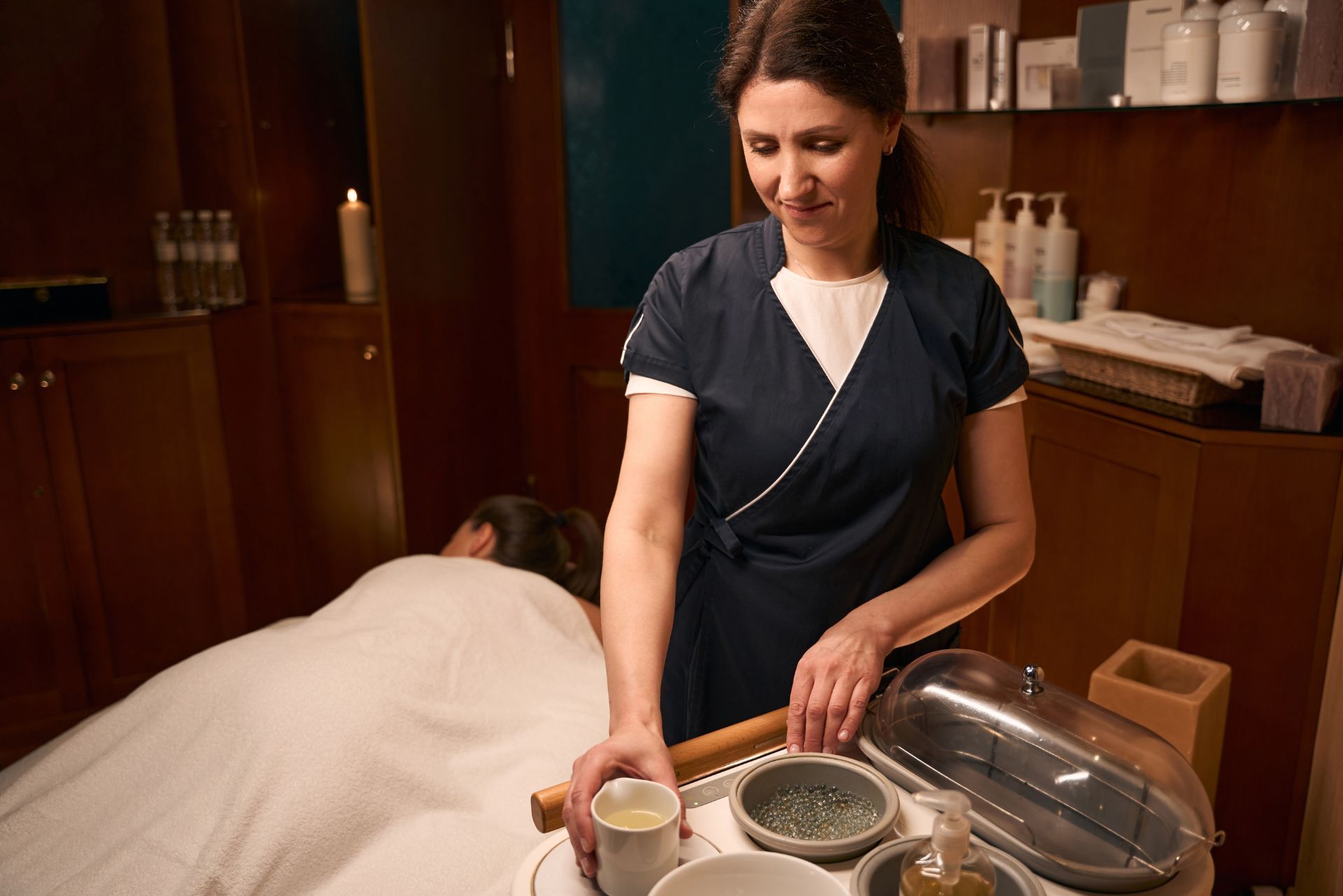Top 3 Recommended Policies

In the bustling world of wellness and relaxation, spa services have become a vital part of many people's lives. However, running a spa in New York comes with its own set of challenges, including the need for adequate insurance coverage. This article delves into the essentials of spa service insurance, helping spa owners understand their options and the importance of being properly insured.
Understanding Spa Service Insurance
Spa service insurance is a specialized form of coverage designed to protect spa owners from various risks associated with their business. This type of insurance typically includes several key components, each tailored to meet the unique needs of spa operations. Given the nature of the spa industry, which often involves close physical contact with clients and the use of specialized equipment, having comprehensive insurance is not just prudent but essential for long-term success.
Types of Coverage
There are several types of insurance coverage that spa owners should consider:
- General Liability Insurance: This is fundamental for any business, covering claims related to bodily injury, property damage, and personal injury that may occur on the spa premises. For instance, if a client slips and falls in the spa, this insurance can help cover medical expenses and legal fees.
- Professional Liability Insurance: Also known as errors and omissions insurance, this coverage protects against claims of negligence or inadequate work, which can arise from the services provided by spa professionals. This is particularly important in a spa setting where clients expect high standards of care and expertise.
- Property Insurance: This covers damage to the spa's physical assets, including equipment, furniture, and the building itself, in the event of incidents like fire or theft. Given the investment in high-end equipment and decor that many spas make, this coverage is vital for protecting those assets.
Why Insurance is Essential
Having the right insurance is not just a legal requirement; it is also a crucial aspect of risk management. Without proper coverage, a single incident could lead to significant financial loss. Insurance helps mitigate these risks, allowing spa owners to focus on providing excellent services to their clients. Additionally, many clients may feel more comfortable seeking services from a spa that is properly insured, as it demonstrates professionalism and a commitment to safety.
Moreover, the spa industry is subject to various regulations and standards that can vary by location, making it essential for spa owners to stay informed about their legal obligations. Insurance can also provide peace of mind, knowing that in the event of unforeseen circumstances—such as a natural disaster or a sudden increase in claims—spa owners have a safety net to rely on. This not only protects their financial investment but also ensures that they can continue to operate and serve their clientele effectively, even in challenging times.

Key Considerations for Spa Owners
When selecting insurance, spa owners must consider several factors to ensure they choose the right policies for their needs.
Assessing Risk Factors
Every spa has its unique set of risks based on the services offered, location, and clientele. For instance, a spa that offers massage therapy may face different risks than one that specializes in skincare treatments. Conducting a thorough risk assessment can help owners identify potential liabilities and choose appropriate coverage. Additionally, factors such as the spa's location can significantly influence risk; for example, spas located in areas prone to natural disasters may require specialized coverage to protect against events like flooding or earthquakes. Furthermore, understanding the demographics of the clientele can also provide insight into potential risks. A spa that caters to a younger audience may face different challenges compared to one that serves an older population, particularly in terms of health and safety protocols.
Understanding Policy Limits
Each insurance policy comes with specific limits on coverage. It is essential for spa owners to understand these limits and evaluate whether they are sufficient for their business needs. For example, if a spa has high-value equipment or a large number of clients, higher coverage limits may be necessary to protect against potential losses. Moreover, spa owners should also be aware of the exclusions that may apply to their policies, as these can significantly impact their financial protection in the event of a claim. It’s advisable to review the policy details carefully and consult with an insurance professional who can help clarify any confusing terms or conditions. Additionally, considering endorsements or riders to enhance coverage can be a wise decision, especially for unique services that may not be fully covered under standard policies, such as specialized treatments or the use of advanced technology in skincare.
Choosing the Right Insurance Provider
Selecting the right insurance provider is just as important as choosing the right coverage. A reputable provider can offer tailored solutions and support when claims arise. It is essential to consider factors such as customer service, claims processing times, and the provider's overall financial stability. A strong financial standing indicates that the provider is more likely to fulfill their obligations in the event of a claim, giving spa owners peace of mind.
Researching Providers
It is advisable to research various insurance providers, looking for those with experience in the spa and wellness industry. Reading reviews, checking ratings, and asking for recommendations from other spa owners can provide valuable insights into the reliability of potential insurers. Additionally, visiting industry forums and social media groups can reveal firsthand experiences from peers, which can be instrumental in making an informed decision. Engaging with these communities can also highlight any common issues faced with specific providers, allowing spa owners to avoid potential pitfalls.
Comparing Quotes
Once a list of potential providers is compiled, obtaining quotes from each can help spa owners compare coverage options and costs. This process not only aids in finding the best price but also in understanding the different policy features offered by each provider. It's crucial to examine the fine print of each policy, as some may include exclusions or limitations that could impact coverage. Furthermore, discussing specific needs and concerns with insurance agents can uncover additional coverage options that may not be immediately apparent, ensuring that spa owners are fully protected against unique risks associated with their business.
In addition to the standard coverage options, spa owners should also inquire about any additional services that the providers may offer, such as risk management resources or wellness program support. These added benefits can not only enhance the overall value of the insurance policy but also contribute to the long-term success and safety of the spa. By taking the time to thoroughly compare and evaluate different providers, spa owners can secure a partnership that aligns with their business goals and provides comprehensive protection.
Common Exclusions in Spa Insurance Policies
While insurance policies are designed to protect businesses, they often contain exclusions that spa owners should be aware of. Understanding these exclusions can help prevent unpleasant surprises when filing a claim. By familiarizing themselves with these limitations, spa owners can better prepare for potential risks and ensure they have the appropriate coverage in place to safeguard their operations.
Exclusions to Watch For
Some common exclusions in spa insurance policies include:
- Intentional Acts: Claims arising from intentional harm or negligence are typically not covered. This means that if an employee or owner intentionally causes damage or injury, the insurance policy will not provide any financial protection.
- Employee Injuries: Most general liability policies do not cover injuries sustained by employees; separate workers' compensation insurance is required for that. This is crucial for spa owners to understand, as failing to secure this coverage can lead to significant financial liability in the event of an accident.
- Natural Disasters: Events like floods or earthquakes may not be covered under standard property insurance and may require additional policies. Spa owners in areas prone to such disasters should consider specialized coverage to mitigate potential losses.
Additional Coverage Options
To address potential exclusions, spa owners may consider additional coverage options such as:
- Business Interruption Insurance: This can provide financial support if the spa must close temporarily due to a covered event. It can help cover lost income and ongoing expenses, allowing the business to recover more smoothly after a setback.
- Cyber Liability Insurance: With the increasing reliance on technology, this coverage protects against data breaches and cyberattacks. Given the sensitive nature of client information in the spa industry, such as health records and payment details, having this insurance can be a vital safeguard against the financial repercussions of a cyber incident.
Additionally, spa owners might want to explore options like professional liability insurance, which can cover claims related to negligence in the services provided, such as skin reactions to treatments or injuries during massages. This type of coverage is particularly important in a field where personal care and client safety are paramount. Furthermore, considering the rise in popularity of mobile spa services, owners should also assess whether their insurance extends to off-site operations, ensuring comprehensive protection regardless of where services are rendered.
Cost of Spa Service Insurance
The cost of spa service insurance can vary widely based on several factors. Understanding these factors can help spa owners budget effectively for their insurance needs.
Factors Influencing Insurance Costs
Some of the primary factors that influence the cost of insurance include:
- Location: Insurance costs can vary significantly based on the spa's location. Areas with higher crime rates or more frequent natural disasters may see higher premiums.
- Size of the Spa: Larger spas with more employees and equipment typically face higher insurance costs due to increased risk exposure.
- Services Offered: The type of services provided can also impact costs. For example, spas offering high-risk treatments may pay more for coverage.
Estimating Premiums
On average, spa owners can expect to pay anywhere from a few hundred to several thousand dollars annually for insurance. Obtaining multiple quotes and working with an insurance broker can help in finding the best rates.
In addition to the basic factors mentioned, spa owners should also consider the experience and training of their staff. Well-trained professionals are less likely to make mistakes that could lead to claims, potentially lowering insurance costs. Furthermore, implementing safety protocols and maintaining a clean, hazard-free environment can also play a crucial role in reducing premiums. Insurers often look favorably upon spas that prioritize safety and have a solid risk management plan in place.
Another important aspect to consider is the coverage limits and deductibles chosen by the spa owner. Higher coverage limits can provide more extensive protection but may also lead to increased premiums. Conversely, opting for higher deductibles can lower monthly costs but may result in significant out-of-pocket expenses in the event of a claim. Therefore, it is essential for spa owners to carefully evaluate their specific needs and risks to strike the right balance between adequate coverage and affordability.

Claims Process for Spa Insurance
Understanding the claims process is crucial for spa owners, as it ensures that they are prepared in the event of an incident that requires filing a claim. Being informed about the intricacies of this process not only helps in mitigating financial losses but also aids in maintaining the spa's reputation and operational continuity.
Steps to File a Claim
The claims process typically involves the following steps:
- Notify the Insurance Provider: As soon as an incident occurs, the spa owner should contact their insurance provider to report the claim.
- Document the Incident: Gathering evidence, such as photos and witness statements, can help support the claim.
- Follow Up: After filing the claim, it is essential to follow up with the insurance company to ensure it is being processed in a timely manner.
In addition to these steps, spa owners should also familiarize themselves with their specific policy details, as each insurance provider may have unique requirements for documentation or timelines for reporting incidents. Keeping a claims log can be beneficial, where all communications with the insurance provider are recorded, including dates, times, and the names of representatives spoken to. This log not only helps in tracking the progress of the claim but also serves as a reference in case of any disputes or misunderstandings.
Common Reasons for Claim Denials
Claims can sometimes be denied for various reasons, including:
- Insufficient Coverage: If the incident exceeds the policy limits, the claim may be partially or fully denied.
- Failure to Report: Delaying the reporting of an incident can lead to complications in the claims process.
- Policy Exclusions: If the claim falls under an exclusion, it may not be covered.
Moreover, understanding the nuances of policy exclusions is vital for spa owners. Common exclusions may include acts of nature, such as floods or earthquakes, which can vary significantly between policies. Additionally, certain high-risk activities or services offered at the spa may not be covered unless specific endorsements are added to the policy. Therefore, spa owners should regularly review their insurance policies and consult with their agents to ensure they have adequate coverage for all aspects of their business operations.
Legal Requirements for Spa Insurance in New York
In New York, certain legal requirements must be met regarding insurance for spa businesses. Understanding these regulations is essential for compliance and protection.
State Regulations
New York does not mandate specific insurance coverage for spa businesses, but general liability insurance is highly recommended. Additionally, if the spa employs staff, workers' compensation insurance is legally required to cover employee injuries.
Licensing and Certification
Many spa services require specific licenses and certifications. Ensuring that all staff members are properly licensed can help mitigate risks and may even lower insurance premiums.
Conclusion
In the competitive landscape of the spa industry, having the right insurance coverage is vital for protecting both the business and its clients. By understanding the various types of insurance available, assessing risk factors, and choosing the right provider, spa owners can safeguard their operations against unforeseen events.
Whether it’s general liability, professional liability, or property insurance, each component plays a crucial role in ensuring the spa can continue to thrive in New York’s vibrant wellness market. With the right knowledge and preparation, spa owners can focus on what they do best—providing exceptional services to their clients.
Contact Us
Phone
Location

